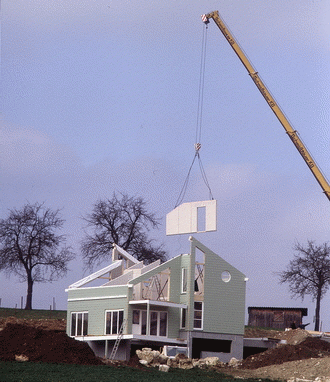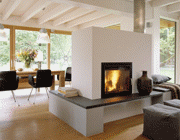Research confirms that that prefab methods of building “have become a real shot” and could provide a means to “mass-produce high-quality housing” (Drueding, Meghan, Maynard and Hutchins, 2005). Prefabricated building methods have several advantages over traditional stick-built methods of construction. There are a number of reasons why prefab homes are the preferred choice of the new generation.

- Higher Quality
Since all the parts are developed in factories, the level of quality control is higher due to the availability of equipment at the factory which may not be available at the site of the job, which enables the building of structurally superior walls as compared to stick-built walls (Modern Modular website, 2008).
- Cost-efficient
Prefab sores over other building methods due to its cost efficiency which occurs primarily through “less labor” which results from “efficient manufacturing” due to “mass customization” (Modern Modular website, 2008) which “costs significantly less than pure custom, site-built projects” which account for a substantial amount of the firm’s labor and costs (Drueding et al., 2005).
- Quicker to Build
Prefab houses consume lesser time to build than traditional houses due to the maximum production taking place in factories which reduces the disturbances of weather and human labor which could be rather unpredictable (Modern Modular website, 2008). Additionally, since technology plays a vital role in designing and constructing these projects, work is faster and more efficiently done as compared to manual labor.
- Higher performance and Value

Prefabricated houses are not only important because of their contemporary design look but more importantly for “how they function” (Drueding et al., 2005). The most crucial aspect of prefab houses is the “sustainability” factor and the enhanced performance and added value as a result of less waste when a house is built in a factory rather than at the physical site (Modern Modular website, 2008). The use of technological tools, especially the computer, enables the saving of labor and time and due to the factory setting, surplus pieces can be used for the construction of other buildings. Importantly, through technology especially computers, the designing and building of the pieces of the house can be done in such as manner that they promote environmental living for instance windows and doors which promote daylight and also help to keep the interiors of the house cool.

The performance of prefab buildings is also greater because of the use of standard “green items” (Modern Modular website, 2008) which include “bamboo floors and recycled paper countertops” help to make buildings and houses which are environmentally friendly and energy savers (Drueding et al., 2005). This makes prefabricated homes “energy star compliant” according to EPA standards (Modern Modular website, 2008) with standard energy-saving technological inclusions such as “solar panels, wind turbines, and geothermal heat” (Drueding et al., 2005). Since all the processes of building prefab houses and buildings are well planned they allow for greater transparency of the entire building process, leaving less scope for faults and errors which provides greater value for the manufacturer as well as the customer (Modern Modular website, 2008).
- Thermal Efficiency


Many prefab homes are “are cleverly designed” so that they have several heating sources for heating water as well as keeping the house warm during cold weather. The design enables the roof to keep the interiors cool during summers and to keep it warm during the winters. Intelligent systems also have facilities for harvesting rainwater.

Prefab homes are the preferred option because they have a “system, a plan, and a dimension” which enables these houses to be built with enhanced quality and greater speed and efficiency. Due to the less time required for building such homes, the cost of building such homes is reduced considerably which adds tremendous value to these prefabricated homes. Most importantly, these homes are higher in performance because they conform to nature and save energy.
References
Baufritz (UK) Ltd. Web.
Drueding, Meghan, Nigel F. Maynard, and Shelley D. Hutchins. “New visions of home.” Residential Architect 9.1 (2005): 77(17).
Modern Modular website, 2008. Web.